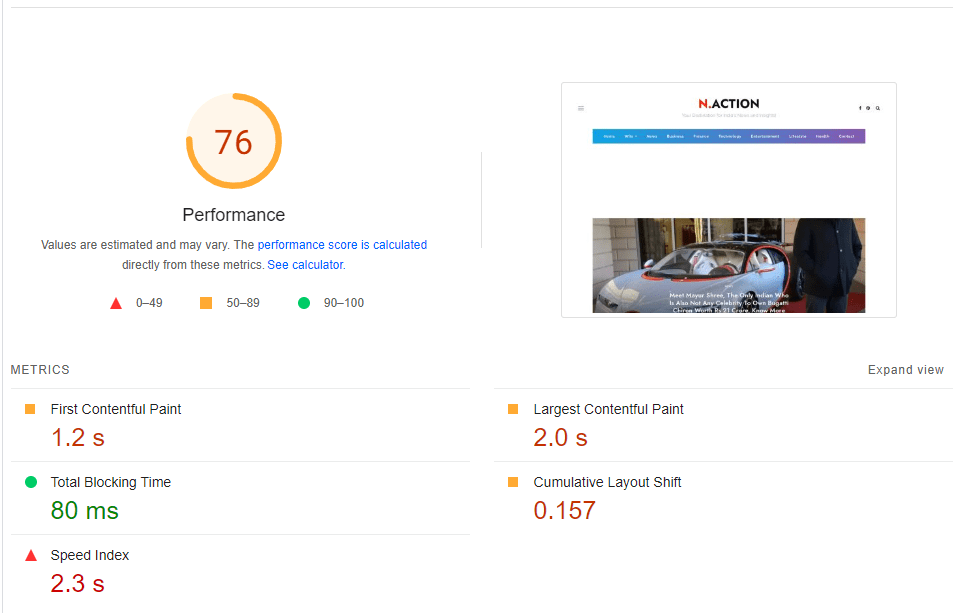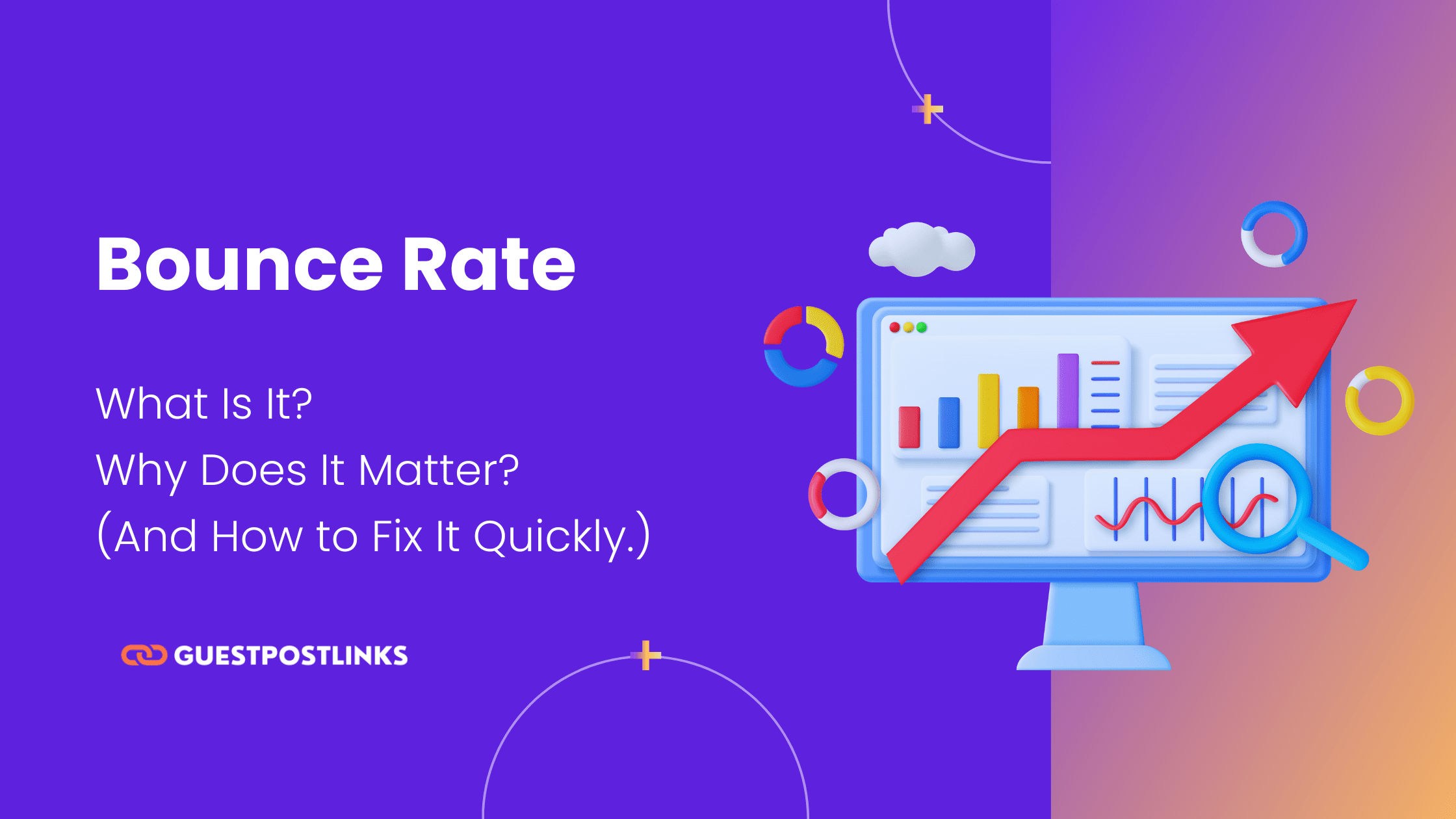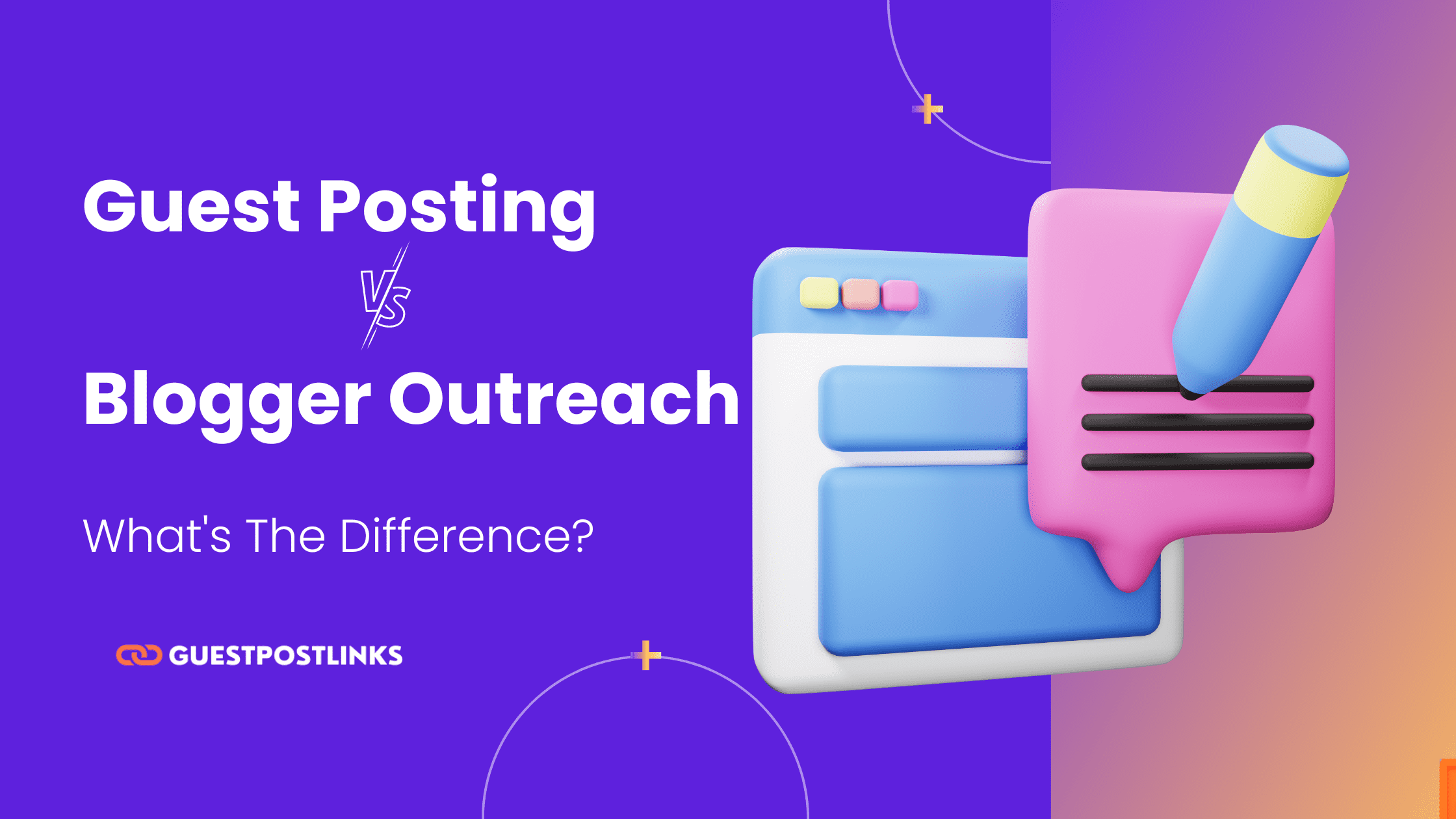Have you ever wondered what bounce rate is and why it matters for your website’s performance?
In this comprehensive guide, we’ll dive deep into the concept of bounce rate and its significance in the SEO and user experience.
We’ll explore its definition, the average bounce rate, the difference between bounce rate and exit rate, and how you can improve your bounce rate to boost engagement and conversions.
So let’s jump right in and uncover the secrets behind this crucial metric.
What is Bounce Rate?
Bounce rate refers to the percentage of visitors who land on a webpage and then leave without interacting further with the site or exploring any other pages within the same domain.
Essentially, it represents the number of single-page visits. A high bounce rate suggests that visitors are not finding what they expected or are not engaged enough to continue browsing.
Does Bounce Rate Matter?
Absolutely! Bounce rate is a critical metric as it directly impacts your website’s performance and user satisfaction. A high bounce rate can be indicative of various issues, including irrelevant content, slow loading speed, poor user experience, or unsatisfactory search intent fulfillment.
By analyzing bounce rate, you can gauge the effectiveness of your website’s design, content, and overall user experience. Lowering your bounce rate can lead to increased engagement, longer time spent on site, higher conversion rates, and improved search engine rankings.
What’s The “Average” Bounce Rate?
It’s important to note that there is no definitive “Average” bounce rate that applies universally. Bounce rates can vary significantly depending on factors such as industry, website type, and user intent.
However, According to a report on GoRocketFuel.com suggest that the average bounce rate for most websites falls between 41 and 51%. Keep in mind that this range serves as a general benchmark, and it’s crucial to assess your bounce rate in relation to your specific industry and website goals.
Bounce Rate VS. Exit Rate
While bounce rate and exit rate might seem similar, they represent distinct metrics. Bounce rate measures the percentage of visitors who leave after viewing a single page, while exit rate tracks the number of visitors who exit your site after viewing multiple pages.
Bounce rate focuses on the initial interaction, while exit rate examines the final interaction before leaving the website.
Bounce Rate Formula
Bounce rate is calculated by dividing the number of single-page visits by the total number of entrances to a page.
The formula is as follows:
Bounce Rate = (Total Number of Single-Page Visits) / (Total Number of Entrances) * 100
Calculating and monitoring your bounce rate regularly allows you to measure the effectiveness of your website’s performance and make data-driven improvements.
What is a Good Bounce Rate?
Determining what constitutes a “Good” bounce rate depends on various factors, including the type of website and its objectives. Generally, a lower bounce rate is desirable as it indicates that visitors are engaging with your content and exploring additional pages.
However, it’s important to consider the context of your website and industry. E-commerce sites, for example, often have higher bounce rates due to visitors finding what they need quickly and making a purchase. Aim to analyze and improve your bounce rate relative to your specific goals and industry benchmarks.
How to Improve Your Bounce Rate?
Now that we understand the importance of reducing bounce rate, let’s explore some effective strategies to improve it quickly:
Embed YouTube Videos On Your Page
Enhance user engagement by embedding relevant and informative YouTube videos within your content. Videos can captivate visitors, provide additional value, and increase the time spent on your website.
Sprinkle In Bucket Brigades
Bucket brigades are phrases or transitions that keep readers engaged and encourage them to continue reading. Use phrases like “Here’s the deal,” “But wait, there’s more,” or “Now you might be wondering” to maintain interest and entice users to explore further.
Loading Speed
Optimize your website’s loading speed to provide a seamless user experience. According to a study by Google, analyzing 11 million landing pages, Slow-loading pages frustrate visitors and increase the likelihood of them bouncing. Compress images, minify code, and leverage caching techniques to improve page load times.
I recommend using the free and helpful PageSpeed Insights tool to check the loading speed.

Compress Images
Large images can significantly slow down page load times. Compress and optimize images without compromising quality using tools like Adobe Photoshop, Squoosh, or TinyPNG. Smaller image sizes help your pages load faster and improve the overall user experience.
Use a Fast Hosting Provider
Choose a reliable hosting provider that offers fast server response times. A slow server can lead to increased bounce rates as visitors become impatient waiting for your pages to load. Research hosting providers known for their speed and uptime to ensure optimal performance. You can find fast hosting providers by checking what your competitors are using as a hosting company. You can do this by using a tool like web hosting detector.
Remove Unused Plugins and Scripts
Streamline your website by removing unnecessary plugins and scripts that can weigh down your site’s performance. Deactivate or delete plugins that are no longer in use or causing conflicts. Reduce the number of external scripts to minimize the impact on page load times.
Also Read: Ultimate SEO Glossary: 499+ Essential SEO Terms You Need to Know!
Make Your Content Easy to Read
Present your content in a visually appealing and easy-to-read format. Use clear headings, subheadings, bullet points, and concise paragraphs to improve readability. Break up long blocks of text and use whitespace effectively to enhance the user experience.
Satisfy Search Intent
Ensure that your content aligns with the search intent of your target audience. Research the keywords and queries your visitors are using and create informative, relevant, and comprehensive content that fulfills their needs. By providing valuable answers and solutions, you can entice users to explore more of your site.
Use Heatmap Data to Improve Key Landing Pages
Heatmaps provide valuable insights into user behavior on your website. Analyze heatmap data to identify areas of low engagement on your key landing pages. Determine where users are clicking, scrolling, and losing interest. Use this information to optimize those pages for better user interaction and engagement.
Add Internal Links to Your Page
Guide visitors to explore more of your website by strategically incorporating internal links within your content. Link to related articles, blog posts, or product pages that provide additional information or value. Internal linking keeps users engaged and encourages them to delve deeper into your site.
Impress Visitors With Beautiful Design
Invest in an aesthetically pleasing website design that captivates visitors and encourages them to stay longer. A visually appealing and well-designed site builds trust and credibility, enticing users to explore more of your content and reducing bounce rates.
Use a Table of Contents
For longer articles or guides, consider adding a table of contents at the beginning. This provides a clear overview of the content structure and allows users to navigate directly to relevant sections. A table of contents enhances user experience and encourages them to engage with your content further.
Optimize Your Mobile UX
With the majority of users browsing on mobile devices, optimizing your mobile user experience is crucial. Ensure your website has a responsive design that adapts seamlessly to different screen sizes. Improve mobile page load times, simplify navigation, and make buttons and links easily clickable for a positive mobile experience.
Link to Related Posts and Articles
At the end of each blog post or article, include a section with links to related content on your website. This provides additional reading options for users who want to explore more on a similar topic. Relevant internal linking keeps visitors engaged and decreases the likelihood of them bouncing.
Use Exit-Intent Popups
Exit-intent popups are triggered when a user is about to leave your website. Employ these strategically to retain visitors who are on the verge of bouncing. Offer them incentives, such as discounts, exclusive content, or free resources, to encourage them to stay or provide their email address for future communication.
Fix Technical Issues
Regularly conduct website audits to identify and fix any technical issues that may contribute to a high bounce rate. Broken links, 404 errors, slow page loading, or compatibility issues can frustrate users and cause them to leave. Monitor your site for technical issues and promptly address them to provide a smooth user experience.
Upgrade Old Content
Revitalize and update outdated content to ensure it remains relevant and valuable to users. Conduct regular content audits to identify underperforming or outdated articles, blog posts, or landing pages. Enhancing and refreshing old content helps keep users engaged and can entice them to explore more of your website.
Is a High Bounce Rate Bad?
While a high bounce rate can indicate potential issues with your website, it’s not necessarily always bad. Certain scenarios, such as single-page blogs or landing pages designed for specific actions, may have higher bounce rates.
It’s essential to consider the context of your website and the user’s intent when assessing the impact of bounce rate.
However, if you notice consistently high bounce rates across various pages, it’s crucial to investigate and implement strategies to improve user engagement and retention.
Final Words
Bounce rate plays a vital role in understanding user behavior, improving website performance, and boosting conversions. By comprehending the factors that contribute to bounce rate and implementing effective strategies to reduce it, you can create a more engaging user experience and increase your chances of success in the digital landscape.
FAQs
In Google Analytics, bounce rate refers to the percentage of single-page visits or sessions in which the user leaves without interacting further with the site.
Generally, a bounce rate of 80% is considered high. However, the acceptability of a bounce rate depends on the context of the website and its objectives. Analyze your specific industry benchmarks to determine the ideal bounce rate for your website.
A bounce rate of 50% is generally considered average, but it ultimately depends on various factors. Compare your bounce rate to industry averages and strive to improve it by implementing the strategies outlined in this guide.
A 5% bounce rate suggests that the majority of visitors are engaging with your website, exploring multiple pages, and interacting further with your content. This low bounce rate signifies high user engagement and indicates a positive user experience.





 No publishers in the cart.
No publishers in the cart.